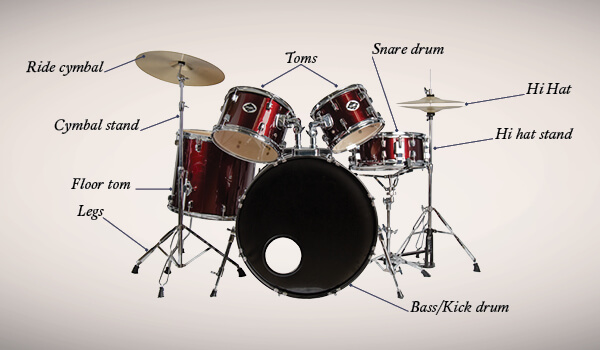Your shopping cart is currently empty.
Care and Maintenance
How to care for your
Percussion Instruments
Assembly

- Set up your drum throne with at least two feet between your back and any walls or obstacles. The height should be where your thighs stay parallel with the floor.
- Hold your drumsticks in your hands and make a horizontal arc in front of yourself. This is a good indicator of how much space you will need once everything is assembled.
- Assemble your snare stand, hi-hat stand, cymbal stands and attach floor tom to its legs.
- Lock the bass drum spurs and attach the bass drum pedal.
- Sit down on the throne and position the hi-hat stand and bass drum so that your feet are able to comfortably reach and operate the pedals.
- Attach the mounting hardware to your bass drum.
- Attach the tom(s) to the mounting hardware and angle the tom(s) towards you.
- Place the snare drum on the snare stand and position the drum between your knees with the throw switch on the left side. This is the most efficient and practical position for most players.
- Position the floor tom on your right opposite of the snare drum and angle it towards you.
- Take the bottom screw and felt off of the hi-hat clutch. Slide the clutch through the TOP hi-hat and replace the felt and screw.
- Place the BOTTOM hi-hat onto the stand and then slide the clutch (with the TOP hat attached) down the rod. Attach by screwing the wingnut into the rod leaving about a quarter to half inch gap between the two cymbals.
- Place your other cymbal(s) on the stand(s). The cymbal should sit between two pieces of felt on the stands and have a good amount of wiggle room. NEVER let the cymbal rest directly on the stand or get pinched between the felt and wing nut.
- Position your ride cymbal to your right (about 45 degrees) and crash cymbal to your left (about 45 degrees).
- Play each cymbal and drum and make minor adjustments as you see fit.
After Use Care
- Place all sticks back in a stick bag so they don’t get damaged or lost.
Steps 2-8 are for traveling/gigging with your drums. - Remove all cymbals and place them into a cymbal bag.
- Take off the floor tom legs.
- Remove tom-toms from mounting hardware and remove the mounting hardware from the bass drum.
- Remove the bass drum pedal from bass drum and fold-up the spurs. Place the pedal into a case or bag.
- Place the snare drum, bass drum and all toms into their corresponding cases or bags.
- Disassemble the hi-hat stand, snare stand and any cymbal stands and place them into a travel case or bag along with the mounting hardware and the floor tom legs.
- If anyone from the band is left ask them for help loading out!
- In general, if you are not planning on playing on the drums for a while, they should be put into cases or at least covered with a large blanket to keep dust and moisture out.
Regular Maintenance
- Drum heads can last a long time if properly put on and played on. If a drum head stretches out over time and becomes “tubby” sounding, it just needs to be tuned up a little bit. With a drum key, turn each tension rod clockwise one half crank in a criss-cross pattern. Repeat this until the desired pitch is achieved.
- Dipping each lug into some Lug Lube or Vaseline before replacing can help keep rust from building up inside the lug.
- NEVER OVER-TIGHTEN ANY OF THE WING NUTS. If the threading gets stripped, there is a very good possibility that you will need to replace the ENTIRE stand.
- Cymbals are a bit like fine wine so the more they age and get used the better they will sound. If the oils on your hand start to make little fingerprints on the cymbal, it is not harmful to it’s longevity. However applying a cymbal polish will help remove the fingerprints and restore shine.
- If the hi-hat or bass drum pedals start to squeak, just apply WD-40 to the area.
- If the shells are ever dusty or dirty, just take a warm damp cloth and wipe down the areas that need attention.
